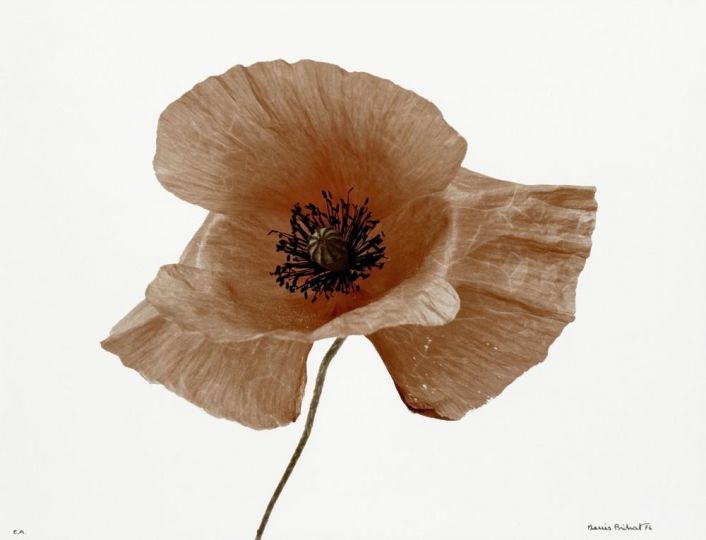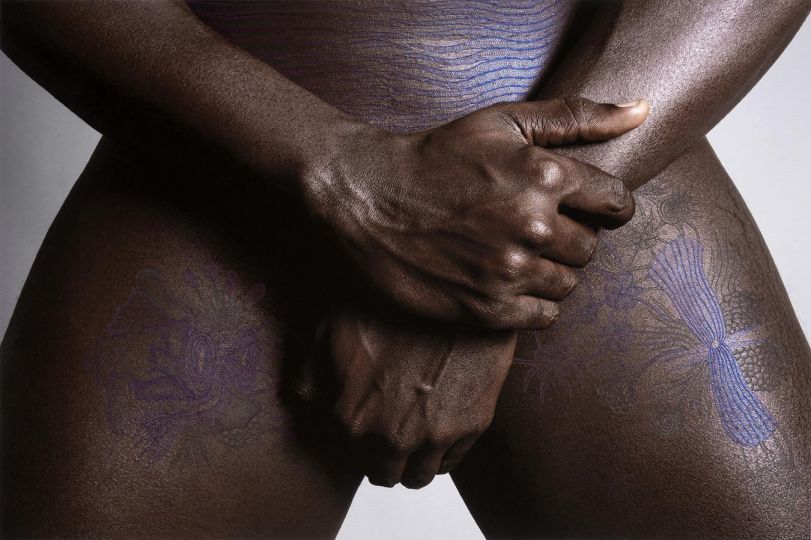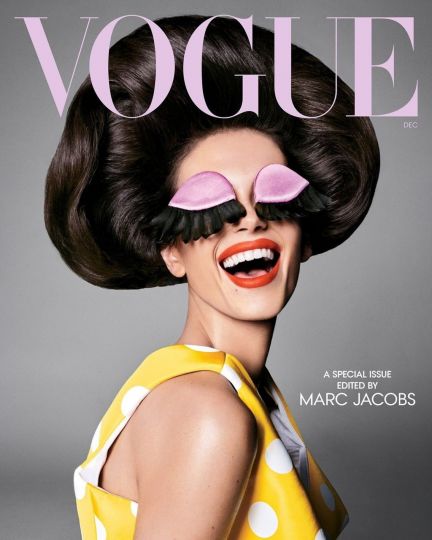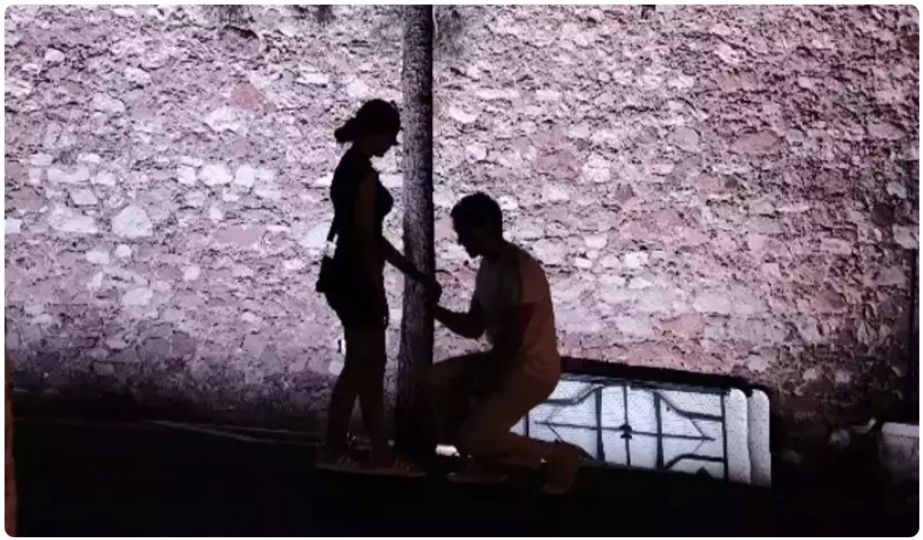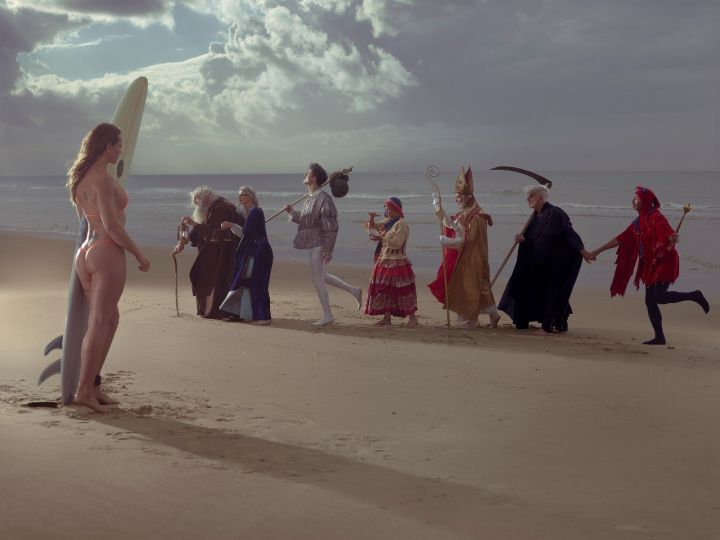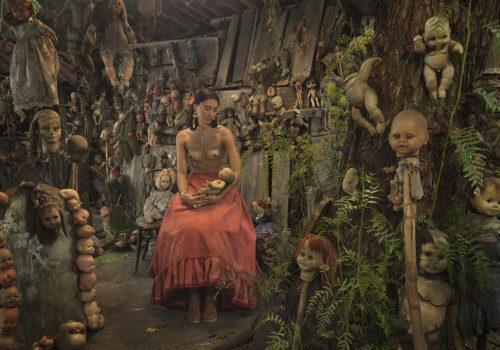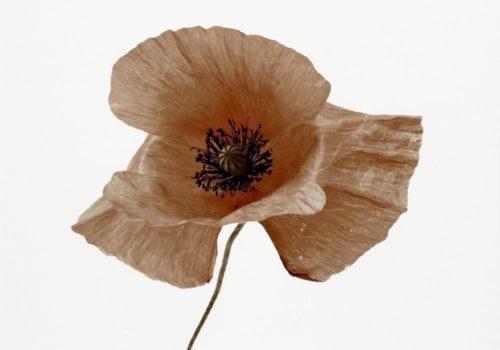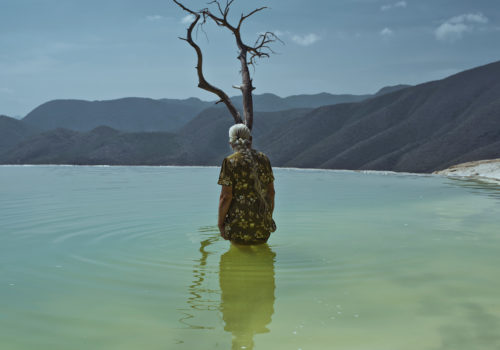Trine Søndergaard (born 1972 in Denmark, lives and works in Copenhagen) is a photographer who openly claims her belonging to the culture of her home country.
Indeed, the majority of the artist’s photographic corpus is inspired by the leading names in Danish visual arts.
Between absence and presence
The references of Trine Søndergaard are obvious and assumed. The most immediately striking lineage refers to Vilhelm Hammershøi (see our article), the Danish artist recreates the interior and interior “landscapes”. The Danish painter was above all anxious to transcribe the idea and the feeling of presence in the absence, and consequently the silence that accompanies it. He created existentialist portraits of private spaces with doors, corridors and mirrors in rebound, like an infinite variation of Diego Velázquez’s Meninas. Apertures suggesting both the remoteness and the surge of a presence, the openings of the “inner” space acting as silent referrals. Nevertheless, Vilhelm Hammershøi has sometimes populated his empty interiors, introducing in a monochromatic and refined atmosphere, characters who are almost essentially female. It is very often the same model with her back to the painter and the viewer. These women seen from the back with immutable hairstyle and similar clothing seem to be “reflections”. The rendered image could be that of a person facing the painter whose only reflection would be the back, the painter and the models having disappeared from the representation, all erased or absent, but still present or reflected.
Still
One of the exhibitions by photographer Trine Søndergaard is entitled “Still” (currently visible at the House of Denmark) and includes two series “Interior” and “Guldnakke”. The first of these series brings together clichés of interiors realized between 2008 and 2012. These photographs take up scrupulously the theme of Vilhelm Hammershøi. The singular title plays precisely on this ambiguity between the interiors and the more or less evanescent interiority. The Danish artist’s photographs take up the painter’s monochromatism and the same attention to light that echoes from one surface to another. Trine Søndergaard re-imagines, or rather makes visible in her own particular way, the remanence of presence in deserted human habitats.
However, it is not a question of detecting physical traces of the inhabitants of the place, but all that constitutes the “interiority” of a “place”, a “being there”. The unmanned manors that the photographer seizes are both empty and filled with a certain presence that is a form of sensitive ontology. The profane light reveals in these now abandoned human habitats something impersonal, but “palpable”, a kind of haptic presence (see our article). This shelter is that of men, even if they have not been there for a very long time. On the other hand, the openings and doors that seem to be reflected are an obvious metaphor for interiority. There is a strangely “monadic” and solipsistic aspect in the images of Trine Søndergaard and her mentor.The rejected portraits
The series “Guldnakke” takes up another “idea” of Hammershøi: portraits , to which the photographer associates a historical connotation. In her portraits of young women stealing away, she used mid-nineteenth-century headdresses made with gold thread, woven by the wives of successful farmers. It was a sign of social distinction, but also a way for spinners to support their families independently. Trine Søndergaard thus superimposes different contents and sources of inspiration: the reminder of the portraits in hypothetical reflection of Vilhelm Hammershøi, the preciousness and the delicate details of the golden headdresses, the double history of the ceremonial garment of the nobility and the clergy, as well as the distant evocation of the social context of the emerging independence of women in Denmark. The essential thing is, nevertheless, more probably in the fascination exerted by the observation of the decorative detail and of portraits that are not precisely so. Young women seen from the back with ancient headdresses and contemporary clothing are treated like art landscapes in the details of which one gets lost. These young women carelessly leave their hair, their shoulders, and the grain of their skin, be seen as anachronistic outfits. Everything is treated according to the same formal value, the model, her flesh her garments, in a sprawling light without “pathos”. The characters seen from the back of the photographer are as far away as the silhouettes of Vilhelm Hammershøi’s paintings.
The Diffracted Portrait
Apart from these two series, Trine Søndergaard’s corpus testifies to her taste for phenomenological photography, presence and reflection, and “persona”. Indeed, in the series “A Room Inside” (2015) the photographer develops the theme of the “recalcitrant” portrait; young diaphanous girls pose hidden by headdresses, veils or sheltered by black lace. Some brandish mirrors in front of their faces, or even their torsos. The title is illuminating: “A Room Inside”, the interior, the place, the place, the empty space, are here represented by the absence of identity or the refusal to be identified. The world of Swedish filmmaker Ingmar Bergman, in the Silence or Persona, resonates powerfully with this series directed by the Danish photographer. On the other hand, it reminds us of the pre-existentialism of the Danish thinker Kierkegaard, especially in his first works dealing with the aesthetic and ethical stage; one dedicated to the sensuality repeated and desperate to be satisfied definitively, the other devoting himself to the “choice of oneself”. Trine Søndergaard’s work stands in between, a specular stadium, a moment of diffraction that does not seem to be ending.
The photographer has undertaken many other series. There are veiled women, monochrome portraits in the style of Pop Art but paradoxically mingled with interiority, a hunting party close to Antonioni (in collaboration with Nicolai Howalt), portraits of suburban landscapes or portraits of women confronted with classical statuary, even antique, and so on. In all cases the whole body of work revolves around the notion of portrait as landscape and landscape as portrait, where interiority fades or becomes denser, often in a striking dialectic of antinomies.
Thierry Grizard
—
Source : Artefields.net
Released first on Artefields.netunder the title : Trine Søndergaard, photographier le silence
Author : Thierry Grizard



